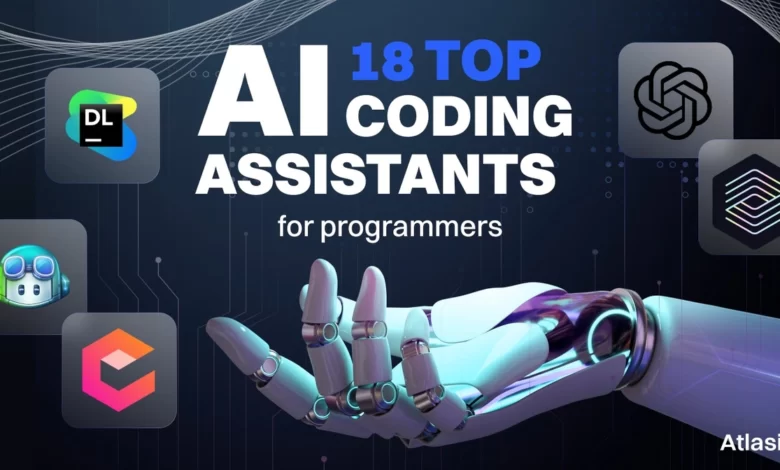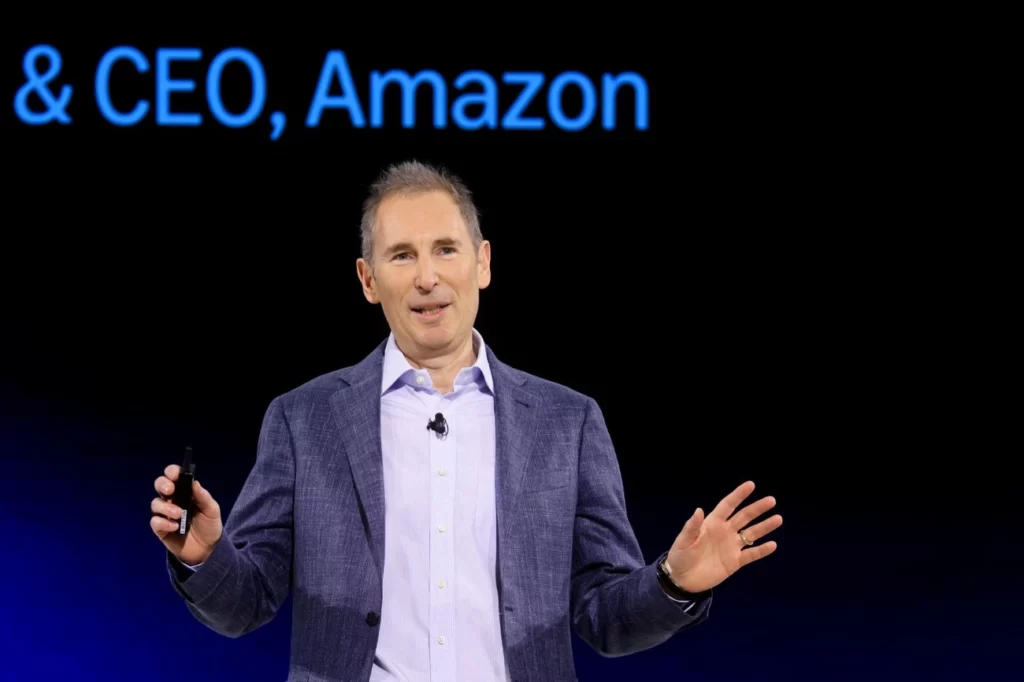Amazon Software Engineers Report Faster, Harder Workload Under AI

AI has revolutionized Amazon’s workplace, helping software engineers complete tasks in days instead of weeks. Teams have shrunk by half but still deliver the same output, leaving developers feeling like “bystanders in their own jobs.” Recent data shows more than 30 percent of code at major tech companies comes from AI suggestions that developers approve. Amazon’s CEO Andy Jassy expresses how generative AI brings substantial returns in efficiency and cost savings.
This technological transformation has created mixed results for Amazon’s workforce. The company claims AI implementation saved “the equivalent of 4,500 developer-years,” which definitely boosted Amazon’s stock performance. Engineers worry about work quality and their professional growth as they now spend more time reviewing AI-generated code than writing it themselves. These changes raise critical questions about software engineering’s future and whether optimized efficiency might end up weakening the skills that make great engineers.
Amazon accelerates AI adoption in software teams

Amazon’s leadership has started a bold initiative to combine AI smoothly throughout the company’s software development process. The tech giant changes how its engineering teams operate faster than ever, with major adjustments to workflows, performance expectations, and development tools.
CEO Andy Jassy outlines AI productivity goals
Andy Jassy’s annual shareholder letter emphasized that “generative AI is going to reinvent virtually every customer experience we know, and enable altogether new ones about which we’ve only fantasized”. This vision has led to concrete actions across the organization, and more than 1,000 generative AI applications are currently under development at Amazon.
Jassy believes AI is crucial to maintain competitive advantage and states bluntly that companies not making use of intelligent models “will not be competitive”. His message remains clear: speed is non-negotiable. “If we don’t get our customers what they want as quickly as possible, our competitors will,” he wrote.
This bold approach has yielded substantial results. Amazon’s reports show saving “the equivalent of 4,500 developer-years” through AI-assisted software upgrades and generating about $260 million in yearly efficiency gains. Tasks that once took 50 developer-days now need just a few hours with AI assistance.
Hackathons and internal tools push AI usage
Amazon has implemented practical measures to speed up AI adoption beyond executive directives. Software engineers are encouraged to develop new AI productivity tools through internal hackathons and coding competitions. These events have involved tens of thousands of developers, with over 7,600 participants in a recent Amazon PartyRock hackathon alone.
Amazon Q’s internal adoption happened quickly. The company reduced developers’ waiting time for technical answers by over 450,000 hours by combining this assistant with internal knowledge repositories. Developers who used Amazon Q were 27% more likely to complete tasks successfully in productivity challenges.
Engineers describe Amazon Q as “like another engineer on the team” or “super autocomplete”. One developer noted that “any individual developer can now become a team of developers” by assigning work to different AI agents. This change has created new pressures, as managers increasingly push engineers to use AI in their work, raise output goals, and become less forgiving about deadlines.
Amazon stock reflects investor confidence in AI strategy
Financial markets have responded well to Amazon’s AI investments. The company plans to boost its capital expenditure to $100 billion in 2025, a 20% increase from the previous year, with most spending directed toward AI infrastructure and custom chip development.
Amazon’s AI-focused cloud business has reached a multibillion-dollar yearly revenue run rate and grows at triple-digit percentages year-over-year. AWS leads global cloud infrastructure with a 30% market share and stands ready to capitalize on AI opportunities.
Investors value Amazon’s long-term AI strategy in a variety of business segments. The company’s custom Trainium2 chips provide 30-40% better price-performance than current GPU-powered compute instances, offering a potential cost advantage in the competitive AI infrastructure market. Many analysts see Amazon’s valuation as attractive compared to peers, which suggests strong growth potential for long-term investors.
Developers report increased pressure and reduced autonomy

AI implementation has changed how Amazon’s engineers work. Many developers now face more pressure as managers expect more output with fewer resources.
Engineers say deadlines are tighter and teams are smaller
Amazon’s deeper AI integration puts software engineers under tough conditions. Several developers revealed their teams have shrunk – one engineer’s team is “roughly half the size it was last year”. Teams still need to produce the same amount of code despite these cuts.
Projects now need completion much faster. Work that took weeks must finish in days. Engineers point out that deadlines have become stricter across the company. This speed leaves little time to work together and solve problems thoughtfully. Developers must rely on AI tools heavily to meet these expectations.
AI tools move focus from creation to assembly
Software development at Amazon has changed from creative coding to managing AI solutions. Engineers feel like “bystanders in their own jobs”. They spend more time checking AI-generated code than writing it themselves.
Programmer Simon Willison noted, “It’s more fun to write code than to read code.” He added, “When you’re working with these tools, [code review] is most of the job”. This change leaves developers with little time to think about their work. Many Amazon engineers prefer more control over their output and hesitate to use these tools fully.
Performance reviews now tied to AI usage
Amazon says AI adoption is optional, but developers tell a different story. Engineers who talked to journalists described how avoiding AI could mean falling behind their peers. This matches what’s happening at other companies like Shopify, where CEO Tobi Lütke told employees that “AI usage is now a baseline expectation” factored into performance reviews.
Amazon spokesperson Brad Glasser maintains that AI increases engineering expertise rather than replacing it. He says promotion paths stay “clear and performance-based”.
How AI is reshaping the nature of coding work

AI has revolutionized the coding world. Software engineers at Amazon and beyond now work in a radically different environment. The rapid pace of technological advancement brings new possibilities and hurdles as development cycles get shorter and expectations rise.
Tasks that took weeks now completed in days
A remarkable 92% of developers at large companies use AI coding tools. The data shows 70% of them report major improvements. Developers across the industry have cut their development time by 55%. GitHub Copilot writes almost half of all new code in enabled repositories. AI-first engineering strategies help startups launch their minimum viable products in 6 weeks instead of 6 months.
Amazon’s experience shows tasks that needed 50 developer-days can now be completed in hours with AI assistance. AI-powered testing has cut quality assurance cycles by about 60%. These changes have sped up development timelines substantially.
Less time for collaboration and creative problem-solving
The data reveals 87% of developers say AI tools help them save mental energy by handling routine tasks. Engineers can focus on complex problems and solution design rather than writing basic code. They spend more time reviewing AI output and less time working together.
Engineers face a new challenge. They have become AI managers rather than creators. This change has eliminated valuable reflection time that helped them improve their problem-solving skills.
Junior engineers risk missing foundational learning
The changes raise concerns about early-career development. New developers depend on AI tools “24/7” but often struggle to explain the generated code’s functionality. Knowledge gaps become obvious when they face unique challenges that need deeper understanding.
The industry faces a potential talent pipeline crisis. Companies hire fewer junior engineers. This trend raises important questions about Amazon’s future. The company needs experienced software engineers, but eliminating entry-level positions could affect its long-term engineering capabilities and stock value.
What this means for the future of tech labor
The Future of Software Engineering in an AI-Dominated Landscape
Amazon’s engineering teams are going through massive changes that paint a complex picture. AI tools have without doubt brought amazing efficiency gains. Teams now complete tasks in days instead of weeks. But this tech revolution comes with human costs we can’t ignore.
Software engineers face a strange situation. Their output has shot up, but many don’t feel connected to the creative side of their work anymore. On top of that, AI integration has changed what companies expect from them. Smaller teams now just need to deliver the same or more output.
The most worrying part might be how this affects new talent growth. Junior engineers who depend too much on AI could miss vital learning experiences they need to build core skills. This gap in knowledge might weaken Amazon’s engineering strength down the line, even though the quick productivity boost has helped their stock price.
What’s happening at Amazon probably shows what’s going on across tech companies. AI promises huge efficiency gains, but we should ask if these tools really increase human abilities or just take their place. Companies must weigh quick financial wins against what might happen to their technical teams in the future.
Amazon has reached a turning point. The company can keep using AI to boost short-term productivity and keep investors happy. Or its leaders could try a balanced approach that keeps the human creativity and problem-solving skills that made Amazon’s technical success possible.
The big question still stands: Will software engineers just become AI system watchers, or will companies find ways to keep the human touch that drives real innovation? The answer won’t just shape Amazon’s path – it’ll change the whole software engineering field.
